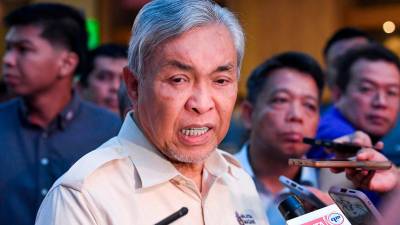KUANTAN: All disaster operations control centres will be activated ahead of schedule to ensure effective monitoring before the northeast monsoon begins next month.
Deputy Prime Minister Datuk Seri Dr Ahmad Zahid Hamidi announced this following the Central Disaster Management Committee meeting which he chaired.
The Malaysian Meteorological Department forecasts the upcoming monsoon season will last until March 2026 and be influenced by a weak La Niña phenomenon.
This condition could result in between five and seven episodes of continuous heavy rain, surpassing the usual average of five per season.
The meeting was attended by state secretaries who serve as chairpersons of their respective State Disaster Management Committees.
Sabah is expected to receive above-average rainfall from November through February 2026 according to the forecast.
Peak rainfall is anticipated in December across Kelantan, Terengganu, Pahang, Johor, Sarawak, and Sabah.
The risk of major floods will increase if persistent rain coincides with high tide events.
MetMalaysia will issue Continuous Rain Warnings at least three days in advance to enable swift response measures.
The Department of Irrigation and Drainage reported a significant reduction in flood hotspots from 4,619 locations last year to 3,683 this year.
This positive development results from ongoing government flood mitigation projects according to the Deputy Prime Minister.
Continued commitment from state governments remains essential to ensure effective flood prevention efforts.
The meeting approved the construction of a Permanent Disaster Relief Centre in Jerantut, Pahang to strengthen community-level disaster resilience.
This project is expected to begin in 2026 through collaboration with the state government and relevant technical agencies.
Thirty-four high-risk critical slopes across the country now have Early Warning Systems for geological disasters such as landslides.
Ahmad Zahid mandated the Department of Minerals and Geoscience to act as the national coordinator for monitoring high-risk slopes.
The department will work closely with other government agencies and private sector partners in this monitoring role. – Bernama
